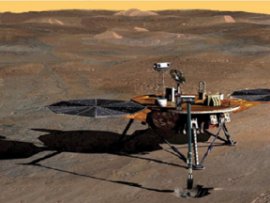A phoenix on Mars
If all goes well, in 2008, a spacecraft will land on the north polar region of Mars and scoop up samples of the icy terrain. Analyzing those samples on the spot, the $325-million probe that NASA approved early last month will look for minerals and organic matter that may indicate whether Mars could ever have harbored life–and whether it still does.

This region may be a promising place to answer such questions because recent studies on Earth have shown that colonies of microbes that have been dormant for years in frozen soil can revive in melting water ice, notes lead scientist Peter H. Smith of the University of Arizona in Tucson.
The lander for the aptly named Phoenix mission was intended for the 2001 Mars Surveyor program, which was scrapped after NASA lost the Mars Polar Lander as it reached the planet in December 1999.
Scheduled for launch in 2007, Phoenix will carry improved versions of the wide-field cameras and gas analyzer from the lost mission, a trench-digging robotic arm, and hydrology equipment.
The mission may reveal whether Martian soil contains chemicals that would either destroy or support life.
****************
If you have a comment on this article that you would like considered for publication in Science News, send it to editors@sciencenews.org. Please include your name and location.







